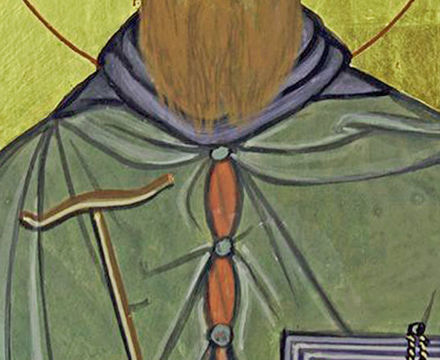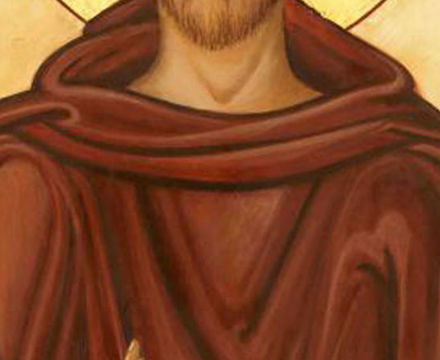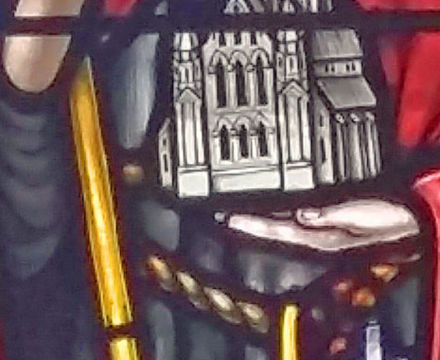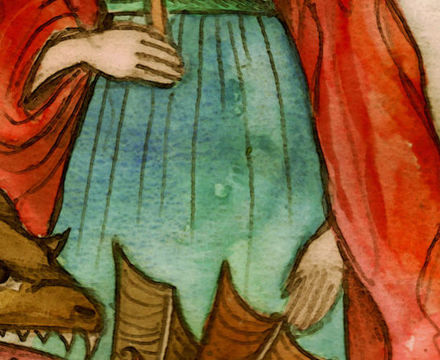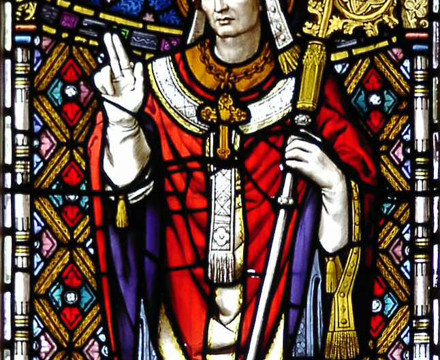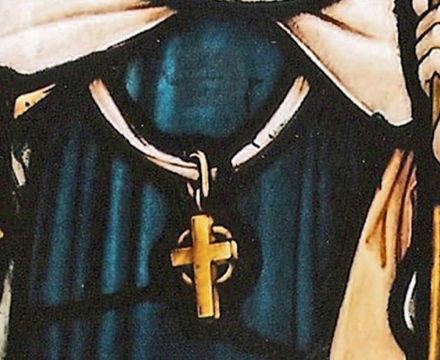- Home
- A Community of Faith
- Our Form Saints
Our Form Saints
Each of our form groups at St. John Fisher is named after a Saint, using the form letters of A,B,C,F and H,M,P,W. You can read more about them below.
Aelred of Rievaulx (1110 – 12 January 1167), was an English Cistercian monk, abbot of Rievaulx [near Helmsley and York] from 1147 until his death, known as a writer and regarded by the Catholic Church and other Christians as a Saint.
St. Brigid is the most well-known female leader of the early Celtic Christian Church. She is one of Ireland’s patron saints along with Saints Patrick and Columba. Irish hagiography makes her an early Irish Christian nun, abbess, and founder of several monasteries of Christian nuns, including that monastery of ‘Kildare’ Ireland, which was considered legendary and was highly revered.
The Irish monk, St. Columba (ca. 521-597), was a powerful preacher and leader of men. He founded monasteries in Ireland and Scotland, which were influential missionary centers. In his early 20s Columba was strongly influenced by one of his teachers, Finian of Clonard, and asked to be ordained a priest. When a prince cousin gave him some land at Derry, he decided to start a monastery. Because of his love of nature Columba refused to build the church facing east, as was the custom; he wanted to spare the lives of as many oak trees as he could.
It is said that St. Francis received the stigmata two years before he died. This was the wounds of Christ from the cross including his hands, feet, and side.Francis travelled to the Holy Lands during the Crusades hoping to conquer the Muslims with love rather than war. Francis set up the first known Nativity scene to celebrate Christmas in 1220. He believed that actions were the best example, telling his followers to "Preach the Gospel at all times and when necessary use words."
Hilda of Whitby (c. 614–680). Abbess and founder of a Christian community at Whitby, to which both women and men belonged. She became a nun in 647, and in 649 she became abbess of a convent at Hartlepool. After she founded the community at Whitby, she remained there for the rest of her life. An important figure in the conversion of the Anglo-Saxons to Christianity, she was abbess at several monasteries and recognised for the wisdom that drew kings to her for advice. She trained five bishops, convened the Council of Whitby, and encouraged the poet Caedmon.
St Margaret was also called the "Pearl of York", and was born about 1556; died 25 March 1586. Margaret lived during the reformation.She continually risked her life by harbouring and maintaining Catholic priests, was frequently imprisoned, sometimes for two years at a time, yet never daunted, and was a model of all virtues.Margaret Clitherow allowed secret masses to be celebrated in her home, where she also hid Roman Catholic missionary priests. She was seized on March 10, 1586, during a raid on her home. At her trial she refused to plead guilty or innocent, stating that only God could judge her, and was executed by being slowly crushed to death with an 800-pound weight.
Saint Patrick is the patron saint of Ireland. He was a Christian missionary credited with converting Ireland to Christianity in the AD 400s. When he was about 16, he was captured by Irish pirates from his home in Britain and taken as a slave to Ireland, looking after animals; he lived there for six years before escaping and returning to his family. After becoming a Priest, he returned to northern and western Ireland. In later life, he served as a bishop. The symbol he is associated with is the Shamrock which he is said to have used to teach about The Trinity.
Born in Northumberland in 634, St. Wilfrid was educated at Lindisfarne and then spent some time in Lyons and Rome. Returning to England, he was elected abbot of Ripon in 658. In the year 664 he was elected Bishop of Lindisfarne, and five years later was transferred to the see of York. He had to combat the passions of wicked kings, the cowardice of worldly prelates, the errors of holy men. He was twice exiled and once imprisoned; yet the battle which he fought was won. He swept away the abuses of many years and a too national system, and substituted instead a vigorous Catholic discipline, modelled and dependent on Rome.


